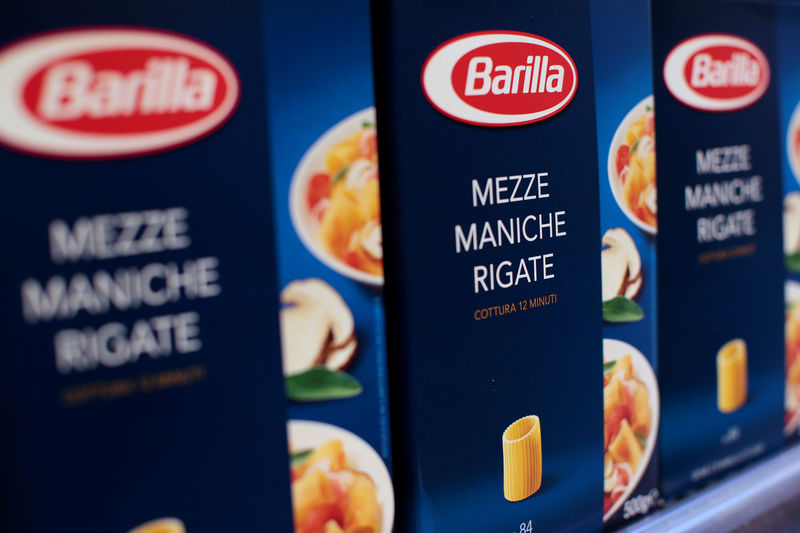(Bloomberg) -- A global binge on comfort food during Covid-19 pandemic lockdowns is boosting the prospects for a type of Canadian wheat already in heavy demand from pasta lovers.
Canada’s durum exports in the 10 months ended May 31 surged 17% from a year earlier amid lackluster crops in Europe and North Africa. The grain is used in everything from pasta and flatbreads to couscous. Just as output sank in major markets, the coronavirus sparked a wave of panic buying as shoppers filled their carts with staples such as pasta, flour, cereal and crackers.
Exports are likely to continue to rise in the coming months, Neil Townsend, chief market analyst at FarmLink in Winnipeg, Manitoba, said in a telephone interview. Canada is the world’s top exporter of durum, which is milled into semolina flour for spaghetti.
“Ultimately, it would’ve been a good year anyway, but that extra pasta being sold at the supermarkets is helping,” Townsend said. “People are buying a bit more flour and they are buying a bit more pasta.”
Adverse weather is expected to curb output of durum in Italy, the world’s biggest pasta consumer, while drought in countries such as Morocco have cut yield forecasts. While Canada usually exports some durum for livestock feed, the majority of recent shipments were aimed for human consumption, suggesting that “pantry preparedness” is boosting demand and prices, Townsend said.
U.S. pasta sales rose 54% in the 16 weeks ended June 20, Nielsen data show.
Canadian durum exports in April surged to the highest in a year, Canadian Grain Commission data show. From August to May, shipments tripled to Turkey and Nigeria and almost doubled to Italy. Durum prices in Saskatchewan are trading close to a three-year high, according to data from Farmers Advanced Risk Management Co. in Winnipeg.
Global demand for pasta is rising, and countries in Europe facing reduced harvests are buying to meet greater consumption, said Jim Meyer, treasurer of the National Pasta Association in Washington and president of St. Louis-based Italgrani USA, the largest semolina and durum flour miller in the North America.
Durum acres in 2020 are poised to expand in North America, and if the crop continues to progress, that “would certainly help in the current situation in that more pasta is being consumed by the general public,” Meyer said.
Farmers in Canada sowed 5.69 million acres of durum in 2020, up 16% from a year earlier, according to government data. Output in the U.S. is forecast to rise 3.7% to 56 million bushels, according to the Department of Agriculture.
“We’re seeing people eat more at home, so they are eating more pastas,” said Michael O’Dea, a risk management consultant at StoneX in Kansas City, Missouri.
Canada is sending large volumes to Italy that are approaching levels before country-of-origin labeling rules effectively hampered trade, said Cam Dahl, president of Winnipeg-based industry group Cereals Canada. As supplies dwindle in other countries, exports from North America will probably continue to climb, he said.
“There are no other suppliers,” Dahl said in a phone interview. “If you eat couscous in Casablanca, you’re probably eating Saskatchewan durum wheat.”
©2020 Bloomberg L.P.
